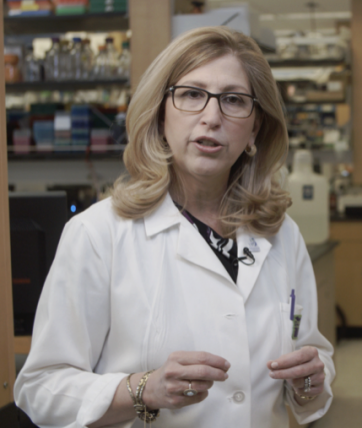 Teresa Woodruff, PhD, Director of the Women's Health Research Institute recently sat down with Discov-Her to discuss her field of oncofertility--check out the interview below!
Teresa Woodruff, PhD, Director of the Women's Health Research Institute recently sat down with Discov-Her to discuss her field of oncofertility--check out the interview below!
As patients survival rates improve thanks to the development of more effective treatments, women can look forward to a life after cancer. However, many may face the possibility of infertility as a result of the disease itself or these lifesaving treatments. Oncofertility is an interdisciplinary field at the intersection of oncology and reproductive medicine, which expands fertility options for cancer survivors. DiscovHER interviewed Dr Teresa Woodruff, the founder of the Oncofertility Consortium, to learn more.
What inspired you to form the Oncofertility Consortium?
The Oncofertility Consortium was literally ‘born’ from the urgent unmet need of young female patients who were being sterilized by their cancer treatment. Ten years ago the phrase ‘families after cancer’ for women would have been an oxymoron if thought of at all. Today, due to the impressive rise in cancer survivors, this is not only a well-used phrase, but also an issue that women increasingly want addressed. Because both oncologists and fertility specialists need to be included in the solution, I created the work ‘oncofertility’. By including both specialties in the word, with no hyphen to separate the two, the need for integration was generated. And even as the lexicon is being established, the boundaries are being moved to the fertility needs of childhood cancer survivors. The life-preserving but fertility-threatening treatments offered to women and girls with cancer must be coupled with possibilities for preserving reproductive options.
What is the importance of transdisciplinary teams, knowing that you work with specialists from various backgrounds?
I believe that the solutions to the most intractable problems in medicine include teams of individuals who bring different perspectives. In the case of oncofertility, we needed teams because the fertility concerns of young cancer patients could not be solved by one field - we had to integrate. Perhaps most importantly, if we wanted to make options available to patients now, we needed a 360 approach to the problem. We couldn’t just publish papers and wait for clinicians to catch on. We couldn’t just tell physicians to tell a young cancer patient at the time of diagnosis that she would be sterile without options - and we couldn’t let that patient wonder or worry what her church would say, how she might pay for the procedure, or who had rights to the tissue. So, bringing together all of the disciplines of the academy into oncofertility was a necessary first step.
Perhaps our Oncofertility ribbon tells this story best - when I coined the term “oncofertility” I knew we would need a way for physicians and patients to know they were with a group that was doing everything possible to make their hope of a future family a reality - even if this meant years of research and progress that might not help them, but would help someone in the future. So I looked at the list of ribbons - like the pink ribbon for breast cancer - but all of the colors were taken. So, I created a ribbon that is intrinsically interdisciplinary. It twines two colors - purple and green that embody clinical and basic science; humanities and the law; the deep knowledge of self with the spring green of eternal hopefulness for tomorrow. It has dots and smooth lines - the dots representing eggs or sperm or embryos or tissue, which then spools up into the structure of a ribbon, however you can see that ours is bowed - it is slightly pregnant. All of these parts make the ribbon just as our interdisciplinary team creates the field.
What is your experience as a female scientist?
I began my work in oncofertility with women and girls. When I started the Consortium, men and pubertal boys were being offered sperm banking prior to treatment. But young women, with the same hope to survive their cancer were not offered any option nor told that their treatment would be sterilizing. They were told they would lose their hair follicles, but not their ovarian follicles (the latter is the structure that houses the female egg). Now we have equity between males and females - they are being told about the fertility threat of treatment and we have options for both sexes.
Dr. Woodruff is the Thomas J. Watkins Professor of Obstetrics and Gynecology at the Feinberg School of Medicine at Northwestern University. She coined the termoncofertility to describe a new discipline that bridgesoncology and reproductive medicine in order to discover and apply new fertility preservation options for young patients with fertility-threatening diseases or treatments. Dr. Woodruff is also Chief of the Division of Fertility Preservation and Director of the Women's Health Research Institute at Northwestern University.
Source: Discov-Her
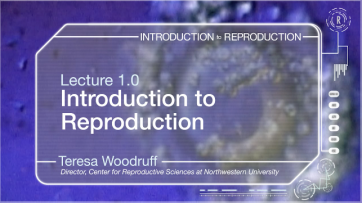 While recent statistics from the Centers for Disease Control and Prevention (CDC) indicate that teen pregnancy rates have dropped (down 10% from 2012), the teen pregnancy rate is still substantially higher than in other industrialized nations. Protected sex does not seem to be a universal practice in the United States. Indeed, the CDC also reported that of the teens who'd had sex in the past three months, about 4 in 10 stated they didn't use a condom. Furthermore, despite the fact that nearly half of the 20 million new STDs contracted each year are by young people ages 15-24, only 1 in 5 sexually experienced teens have ever been tested for HIV.
While recent statistics from the Centers for Disease Control and Prevention (CDC) indicate that teen pregnancy rates have dropped (down 10% from 2012), the teen pregnancy rate is still substantially higher than in other industrialized nations. Protected sex does not seem to be a universal practice in the United States. Indeed, the CDC also reported that of the teens who'd had sex in the past three months, about 4 in 10 stated they didn't use a condom. Furthermore, despite the fact that nearly half of the 20 million new STDs contracted each year are by young people ages 15-24, only 1 in 5 sexually experienced teens have ever been tested for HIV. 
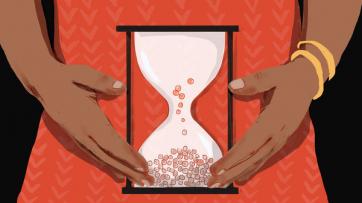 Egg freezing is becoming more common among women who have concerns about their future fertility. Many women prefer to 'play it safe' and freeze their eggs while they are younger just in case they encounter fertility issues down the road. In order to determine whether women should or should not consider freezing their eggs at a young age, the ovarian reserve test was developed.
Egg freezing is becoming more common among women who have concerns about their future fertility. Many women prefer to 'play it safe' and freeze their eggs while they are younger just in case they encounter fertility issues down the road. In order to determine whether women should or should not consider freezing their eggs at a young age, the ovarian reserve test was developed. 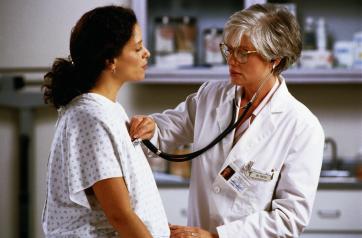 Sex differences in systems and diseases are prevalent across every health field--and there is new research that indicates coronary treatment differs for men and women. A new study of insurance revealed that women get fewer aggressive treatments after a heart attack than men. Indeed, the study conducted by the Blue Cross Blue Shield Association found that women are 27% less likely than men to get angioplasties and are 38% less likely to undergo coronary bypass surgery!
Sex differences in systems and diseases are prevalent across every health field--and there is new research that indicates coronary treatment differs for men and women. A new study of insurance revealed that women get fewer aggressive treatments after a heart attack than men. Indeed, the study conducted by the Blue Cross Blue Shield Association found that women are 27% less likely than men to get angioplasties and are 38% less likely to undergo coronary bypass surgery! 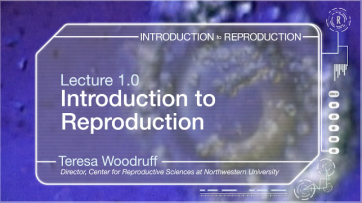 On Monday, September 28th, Northwestern University will launch “
On Monday, September 28th, Northwestern University will launch “ Many college freshmen arrive on campus with only a cursory middle or high school sex ed class in their background, having potentially ‘Googled’ for answers related to their sexual and reproductive health questions that seemed too taboo or embarrassing to discuss in person. Answers surrounding how to use contraception, how alcohol impairs sex, and how changing menstrual cycles impact pregnancy risk may be hidden in dated, dusty health class notebooks or between the lines in lifestyle magazines. But, more often than not, students have unanswered questions relating to their reproductive health, despite being on campus during a pivotal time in their sexual lives.
Many college freshmen arrive on campus with only a cursory middle or high school sex ed class in their background, having potentially ‘Googled’ for answers related to their sexual and reproductive health questions that seemed too taboo or embarrassing to discuss in person. Answers surrounding how to use contraception, how alcohol impairs sex, and how changing menstrual cycles impact pregnancy risk may be hidden in dated, dusty health class notebooks or between the lines in lifestyle magazines. But, more often than not, students have unanswered questions relating to their reproductive health, despite being on campus during a pivotal time in their sexual lives. The truth about reproductive health education in the United States is troubling—and the medical community can help. There is currently no required standard for sex education in this country’s schooling system, and of the 22 states that have mandated sex education instruction, only 13 require this instruction to be medically accurate! Often when schools do provide sex education, it is conflated with having sex, rather than an understanding of reproductive anatomy and function. With 1 in 4 college students contracting STD’s and 42% of pregnancies resulting from inconsistent or incorrect contraceptive use, it’s time to better educate our patients on sexual and reproductive health.
The truth about reproductive health education in the United States is troubling—and the medical community can help. There is currently no required standard for sex education in this country’s schooling system, and of the 22 states that have mandated sex education instruction, only 13 require this instruction to be medically accurate! Often when schools do provide sex education, it is conflated with having sex, rather than an understanding of reproductive anatomy and function. With 1 in 4 college students contracting STD’s and 42% of pregnancies resulting from inconsistent or incorrect contraceptive use, it’s time to better educate our patients on sexual and reproductive health.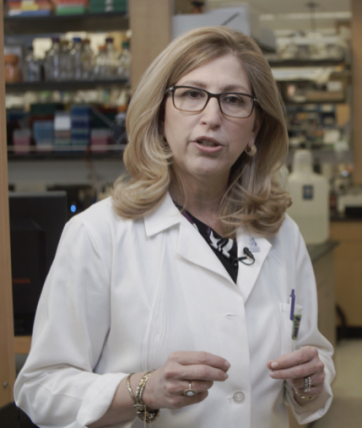 Parents often feel that having ‘the talk’ with their child is a rite of passage, signifying a dramatic shift in their child’s understanding of sex and babies beyond the age-old ‘stork-on-the-doorstep’ anecdote. Indeed, 82% of parents have talked to their children about topics related to sexuality, but only 43% of parents say they actually feel comfortable having these conversations—yikes! So, when do you start that conversation? What level of detail do you provide? How do you answer the first time your child asks, ‘Where do babies come from?’ If you have all these questions (and more), you are not alone! It is imperative for parents to feel comfortable and confident with the information they’re passing along to their children so that they may make well-informed choices that impact their future sexual and reproductive health.
Parents often feel that having ‘the talk’ with their child is a rite of passage, signifying a dramatic shift in their child’s understanding of sex and babies beyond the age-old ‘stork-on-the-doorstep’ anecdote. Indeed, 82% of parents have talked to their children about topics related to sexuality, but only 43% of parents say they actually feel comfortable having these conversations—yikes! So, when do you start that conversation? What level of detail do you provide? How do you answer the first time your child asks, ‘Where do babies come from?’ If you have all these questions (and more), you are not alone! It is imperative for parents to feel comfortable and confident with the information they’re passing along to their children so that they may make well-informed choices that impact their future sexual and reproductive health. Founder of the nonprofit healthcare organization WomanCare Global, Saundra Pelletier, and Hollywood actress Jessica Biel do not seem like a likely pair to launch a series of online videos surrounding "sex ed"--but that is exactly what they are doing. The duo is launching videos that will cover everything from puberty to contraception in the hops of demystifying some misconceptions regarding sexual and reproductive health. Topics that can often be seen as "scary" or "gross" will now be approached via real-life stories of girls and women going through hormonal changes that affect us all. Biel describes the tone for the videos to be "informative but also goofy, smart, witty," encouraging women to speak out and not feel embarrassed or ashamed for perfectly normal bodily functions.
Founder of the nonprofit healthcare organization WomanCare Global, Saundra Pelletier, and Hollywood actress Jessica Biel do not seem like a likely pair to launch a series of online videos surrounding "sex ed"--but that is exactly what they are doing. The duo is launching videos that will cover everything from puberty to contraception in the hops of demystifying some misconceptions regarding sexual and reproductive health. Topics that can often be seen as "scary" or "gross" will now be approached via real-life stories of girls and women going through hormonal changes that affect us all. Biel describes the tone for the videos to be "informative but also goofy, smart, witty," encouraging women to speak out and not feel embarrassed or ashamed for perfectly normal bodily functions. Teresa Woodruff, PhD, Director of the Women's Health Research Institute recently sat down with Discov-Her to discuss her field of oncofertility--check out the interview below!
Teresa Woodruff, PhD, Director of the Women's Health Research Institute recently sat down with Discov-Her to discuss her field of oncofertility--check out the interview below! So you have been dieting and exercising regularly and have noticed some weight loss, but all of a sudden you stop seeing any changes and your weight stays the same. Does this sound familiar? Don't get discouraged, it's normal for weight loss to slow down and even stop. This phenomenon is called the "weight-loss plateau" and it's more common than you think. Even the best planned weight loss program can become stalled.
So you have been dieting and exercising regularly and have noticed some weight loss, but all of a sudden you stop seeing any changes and your weight stays the same. Does this sound familiar? Don't get discouraged, it's normal for weight loss to slow down and even stop. This phenomenon is called the "weight-loss plateau" and it's more common than you think. Even the best planned weight loss program can become stalled.